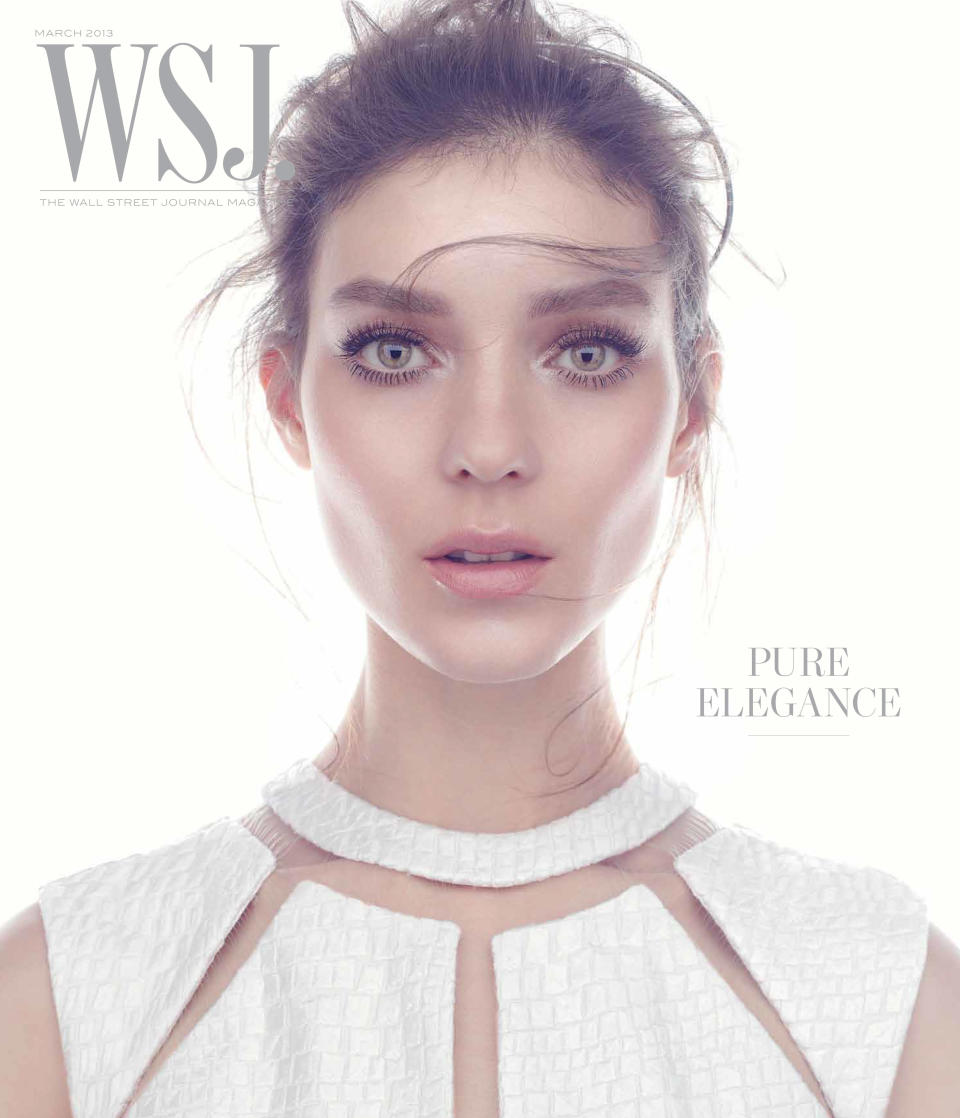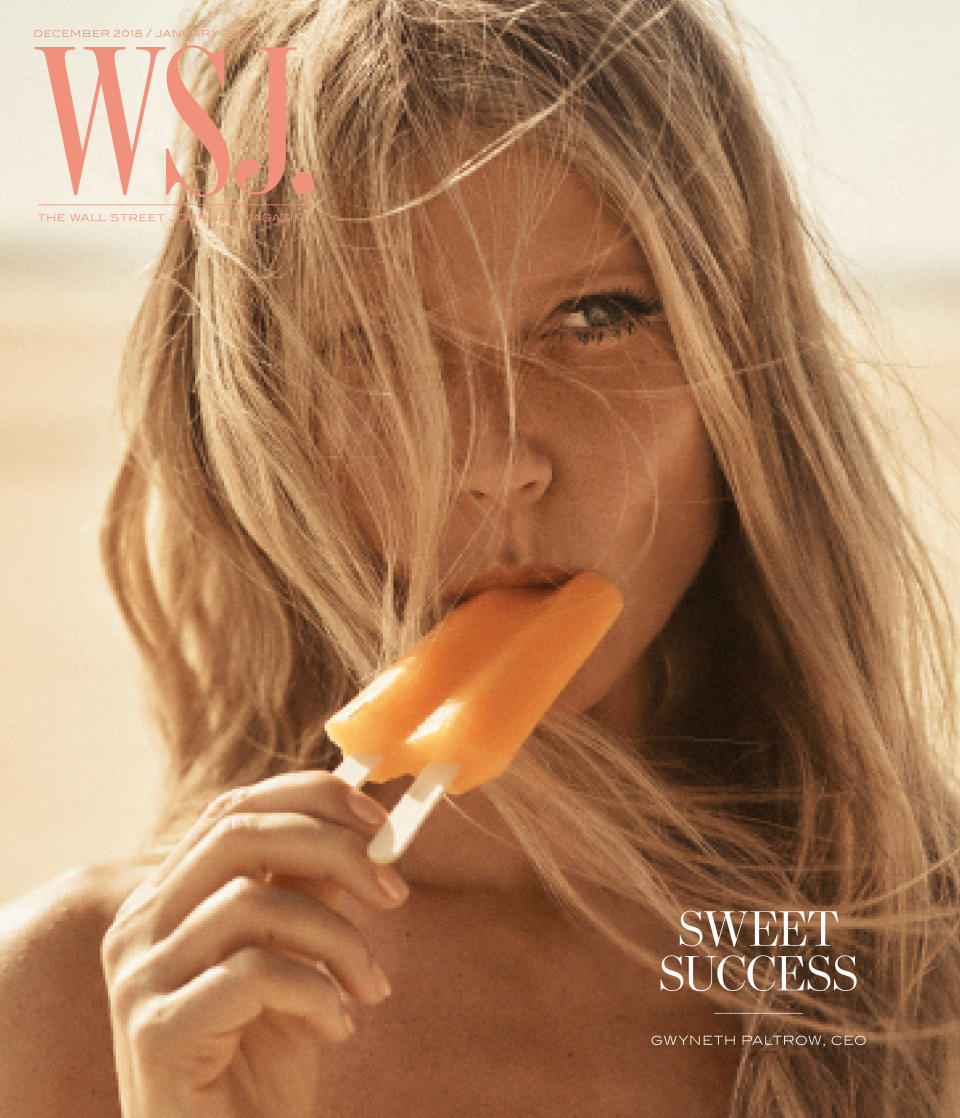WSJ. Magazine Editor in Chief Kristina O’Neill on Breaking Out of Fashion’s Echo Chamber

Ten years ago, when Kristina O’Neill took the helm of WSJ. Magazine, the Wall Street Journal’s glossy fashion and style insert, she was the magazine’s third editor in its then young life. It launched in 2008 as part of Rupert Murdoch’s effort to transform the Journal into a national general-interest publication — and compete directly with The New York Times. She introduced a new logo (in the Journal’s austere Escrow font), recruited boldface names to moonlight as columnists (Karl Lagerfeld, Dwyane Wade, Marina Abramovic were rendered in trademark Journal stipple hedcuts) and set a very lofty goal for herself.
“We [aren’t] changing things just for the sake of change,” O’Neill wrote in her very first editor’s letter to readers. “Each transformation marks a shift toward content that will help you on your path to creating enviably full lives.”
More from WWD
They Are Wearing: Street Style at London Fashion Week Spring 2023
They Are Wearing: Street Style at New York Fashion Week Spring 2023
It could be seen as prescient statement signaling the current FOMO movement, supercharged by social media. But now it also reads like a paean to the era before a global pandemic, attempted insurrection and the obliteration of Roe v. Wade cast their grim pall. But, says O’Neill, 46, “We haven’t veered from that path. If anything, we’ve become more entrenched in that mission of creating content that enriches people’s lives. Now we have a few stories a day that ensure a WSJ. reader’s text thread with friends is full of wit and wisdom.”
Mentions in group texts will remain unquantifiable, but during O’Neill’s tenure, WSJ. Magazine has executed a number of journalistic coups, including the inside story of Kim Kardashian’s shape wear line post “Kimono” debacle; the extraction of a few interesting quotes from the anodyne Tom Brady after his Super Bowl win with the Tampa Bay Buccaneers and a 2018 interview with wellness mogul Gwyneth Paltrow just before her wedding to Brad Falchuk. (The memorable cover photo by Lachlan Bailey had Paltrow eating an orange Popsicle. Gushes O’Neill: “I think it’s probably one of the best pictures of her ever taken. I love it.”)

The next chapter of O’Neill’s tenure comes as the influencer class continues its incursion into the fashion industry, toppling displacing pre-social media era gatekeepers at glossy legacy titles. Now, O’Neill’s mandate includes the kind of new-curve style and fashion coverage that drives clicks and fuels digital ad revenue.
Over the last three months, the Journal has added 16 reporters and editors for what is now a fully staffed Style news desk vertical covering the daily machinations of the industry with more urgency than has been feasible at a glossy magazine that relies heavily on freelance talent.
“The beauty of long lead magazine making is that we sort of have time,” said O’Neill, during a phone call last week from Paris Fashion Week. “We work far in advance and everything is very beautifully, thoughtfully curated. But we were kind of missing that nimbleness. The goal was to create a desk that could react more quickly to things and cover things in the here and now.”
Sarah Ball, Style news editor, cites recent stories about the death of Queen Elizabeth II, market reporter Kelly Crow’s scoops about the art market and the purchasing power of Harry Styles’ fanbase on the morning that “Don’t Worry Darling” posted better-than-expected box office numbers.
The Style desk’s mandate, says Ball, is to “[find] the distinctive style-angle way in [to a story] and often with a more visually lush approach.”
The Wall Street Journal, which was early to the paywall model, has 3.7 million subscribers, the majority of them digital. A Journal spokesperson would not break out the total digital audience for the Style vertical, but in the three months since it was introduced, the digital audience for WSJ. Magazine has quadrupled, according to O’Neill. Meanwhile, the magazine this year will publish eight issues, up from six when O’Neill joined the Journal in 2012. Next year, the magazine will add a ninth issue, all the better to compete with its supplement rivals, especially the Financial Times’ successful How to Spend It magazine (now called HTSI), which this year will publish a whopping 37 issues.
The physical magazine has averaged 74 ad pages an issue, while its Innovator special issue and event (last year’s Innovator Awards recipients included Kardashian, Formula 1 driver Lewis Hamilton, novelist Colson Whitehead and Lil Nas X) has brought in several new non-endemic sponsors including Samsung and Cadillac.
“During her tenure, Kristina and WSJ. Magazine have helped the Journal expand further into new areas of coverage and reach new audiences, widening our lens on the world and increasing our relevance — at a time, it should be said, when magazines have faced upheaval of all kinds,” said Journal editor in chief Matt Murray in an email.
Indeed, those who have worked with her say O’Neill has a knack for generating revenue, which is arguably the top priority for media brands amid the continuing digital disruption. The magazine has brought in 41 new advertisers in the last year, said O’Neill, while luxury fashion brands are expanding their ad footprints, especially in the U.S., the sector’s main booming market. And O’Neill noted that the Journal’s readership of high-net worth individuals is enviably stable at a time when subscriber churn is upending businesses from legacy media to streaming services. This could help to steel the Journal somewhat against the looming recession.
“The WSJ. Magazine was launched in 2008 during a very real recession,” O’Neill said. “I think the company has always felt very strongly that our audience is recession proof. Even in times of economic uncertainty, we don’t see people canceling subscriptions to the Wall Street Journal.”
Those who work with O’Neill say she is collaborative and democratic, she is not a micromanager who line edits every inch of copy. But she does know how to cultivate relationships with the right people.
“I have always thought Kristina was one of the most talented women in our industry,” said Delphine Arnault, executive vice president at Louis Vuitton, who O’Neill featured in her very first issue of the magazine.
“In the 10 years she has spent at WSJ., she has led the magazine into an era of great relevance and modernity, with a timeless vision of fashion, art and society. I was thrilled to be in her very first issue, and it’s inspiring to see the important drive she gave to the WSJ. Magazine in a very successful way.”

O’Neill was raised in Woodbridge, Virginia, a far-flung suburb of Washington, D.C. She came to New York in 1994 as an undergraduate at New York University and has been here ever since. She broke into journalism at the New York Observer, where during college, she worked as Candace Bushnell’s assistant. There were stints at Time Out New York and New York magazine and 12 years at Harper’s Bazaar, where she rose to become executive editor under Glenda Bailey before leaving for the Journal in 2012.
“I’ve always really responded to fashion coverage in the context of cultural storytelling,” says O’Neill. “And I’ve always felt very strongly that it was important to reflect well beyond the echo chamber of the fashion industry, which I think can be quite limiting. We compete with very well-regarded fashion-focused publications. But I think our diversity of coverage makes the one fashion brand story really stand out. The curation is very thought through. And I think that’s what sets us apart. My personal interests are to contextualize fashion in a wider lens of culture coverage.”
When she got to the Journal, she hired Magnus Berger, who was running his own ad agency at the time, as the magazine’s creative director. Her marriage dissolved and O’Neill and Berger became a couple. (They have a six-year-old son; O’Neill has a 15-year-old daughter with her ex-husband.) Colleagues invariably describe Berger as O’Neill’s perpetual plus-one. Their respective Instagram accounts are festooned with gauzy family photos. And O’Neill betrays no awkwardness about working so closely with her life partner.
Asked if they ever disagree, O’Neill said in a follow-up email: “Magnus and I are so in sync we rarely disagree. We are currently having a debate about one of the Innovator covers, so I’ll have to keep you posted on who wins.”
Perhaps owing to her Southern-ish upbringing, O’Neill is comes off as down-to-earth, an un-diva in an industry chock-a-block with editor-monsters. Weekends are spent with family in Brooklyn, New York, where she lives, or, in warmer months, on Shelter Island, where Berger has a home. Her personal style leans classic. Her first designer purchase was a Chanel 2.55 handbag in black, naturally. And she is still capable of being star struck; she recalled rolling under a garage door to see Amy Winehouse at the Fendi Paris Fashion Week show in 2008.
“It was me and Ingrid Sischy and Sandy Brant,” she laughs. “[Winehouse] was about to go on and they were bringing down a rolling garage door. And we had to roll under the garage door, but we got to see Amy Winehouse.”
As for what’s on tap for the next decade, O’Neill still has some cover-gets she has yet to land, though she says they have not changed much in 10 years. “For so long, I really wanted Meryl Streep and then we got Meryl Streep. I wanted to work with Oprah, and then we got Oprah,” she said.
She is still pining for Adele and Rihanna.
“And Rihanna would be a better story today than she would have been 10 years ago,” adds O’Neill. “The goal is to have a team that’s structured like the rest of the newsroom, that’s made up of smart, quick writers with the goal of bringing more Style coverage to the Journal overall, which has historically been a business and finance newspaper. Style was an area that, quite frankly, was under covered at WSJ. And I think we’ve seen in the last few years that everything now is a style story. “


